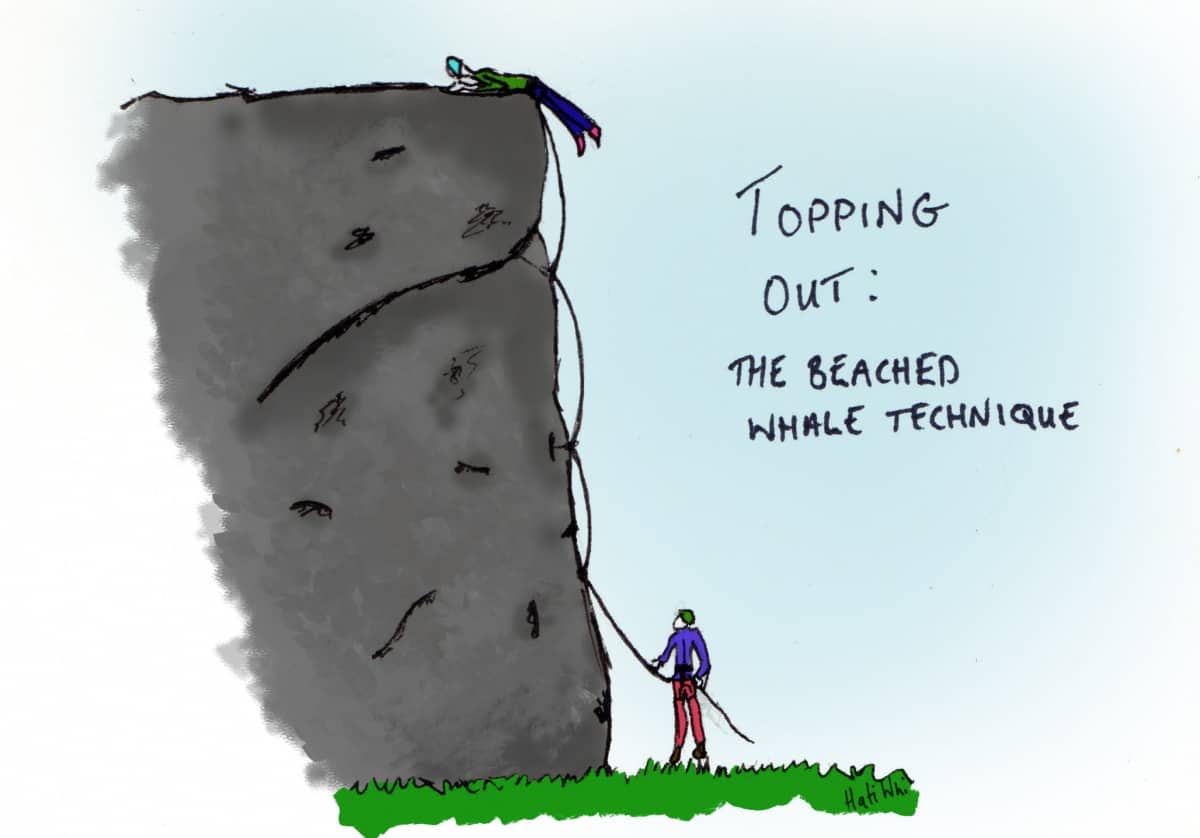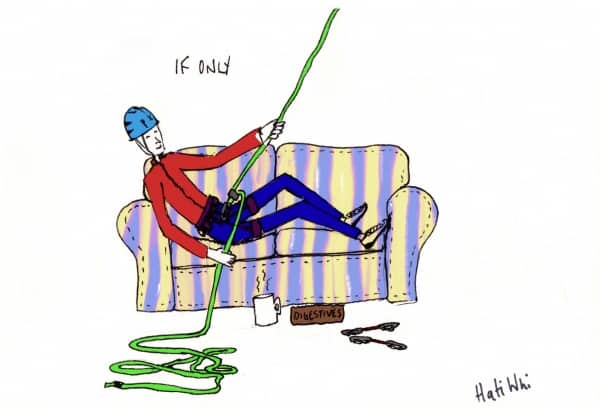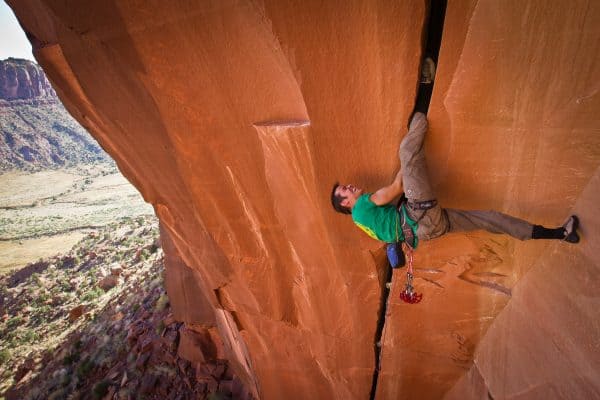Pulling on
You’ve checked RAD, packed your kit and walked to the crag, finally it’s time to get some real rock climbing done.
Hang on, where are all the holds? Which ones do you use? Where are the crash pads and the permadraws? Rock climbing outdoors presents its own challenges and can be hard to get used to. In part 3 of getting into the outdoors we’ll be talking about the actual climbing bit…
Spotting
Your purpose-built bouldering wall is fully equipped with thick matting that makes spotting a rare sight, but spotting is as vital as belaying when you’re climbing outdoors. Make sure you’re happy with how to spot and that your spotter is too.
For the uninitiated, ‘spotting’ is guiding a climber’s fall, protecting their head from impact and ensuring that they land in balance and upright on the crash mat, rather than on sharp rocks or other hazards. Spotting is not catching the climber.
You’re most likely to spot another climber when bouldering, but a leading rock climber may also require a spot at the bottom of a sport or trad route before they have clipped into any gear or bolts.
Falling
Getting used to falling will help you to really push yourself and improve. Good falling technique will help avoid injury.
When bouldering a fall means landing on the ground, on a sport or trad route it means ensuring you have a clear flight path. Either way the key is to relax, don’t tense up. Fear can make us tense, so practise falls with an instructor or experienced climber to get used to the sensation and build confidence.
Check the descent
If I had a pound for every time I’ve been stuck atop a boulder, I’d have at least £6.
We spend a lot of time thinking about how to get up a climb but tend not to consider getting off it again. That is, until we can’t work out how to get down.
Even if you’re not sure you’ll get up there, work out how you’ll get down again before you climb up something. Some traditional routes may require an abseil, and it’s not uncommon for the walk-off to feel even more dicey than the ascent at some mountain crags.

Helmets
Helmets protect you from rockfall or hitting your head when falling awkwardly.
Helmet-use is a much-debated topic amongst climbers. Very few wear helmets when bouldering outside, but common practice is for climbers to wear helmets when climbing with a rope, for example when trad climbing, sport climbing or top roping.
A head injury could be catastrophic and rockfall is common at many crags: wear your helmet!
Warming up (and staying warm)
Whether indoors or out, warming up takes time. Staying warm takes consideration.
The routes at the crag aren’t always tailored to your indoor warm up techniques, so get creative. Start with a pulse raiser (star jumps, skipping, a particularly strenuous approach), followed by some stretching to increase mobility.
Avoid jumping straight on routes that are at your limit, opt for something more amenable to start with (this is where choice of venue comes in!)
When not climbing you may be belaying or resting: inevitably cooling down. Take warm, windproof layers and stay as mobile as possible. Snacks, hot food and hot drinks will give you a boost.
Reading routes
One of the most noticeable differences when climbing outside is the climbs themselves. No resin holds, no colour grading systems, and – if we’ve cleaned off our tick marks properly – no layers of chalk or shoe rubber to tell you where to put your hands and feet. This is where the real route reading begins.
On a short route (like a boulder problem) you can often give the holds a good fondle from the ground. On longer routes this isn’t possible, but use your eyes to get a feel of the sequence from the ground. How will you move between holds? Where will you put your feet? What features might you use? Try to work out where the crux is and think about how you might navigate it. Working top-down ensures you don’t miss out the end bit.
When lead climbing, work out what positions you’ll be in when clipping quickdraws (sport climbing) or when and where you’ll place gear (trad climbing.)
Climbing style
The style of climbing on real rock takes some getting used to, in particular the holds are smaller, harder to find and body position dependent. Be prepared to find climbs of a certain grade more difficult than expected on your first few outings (we promise it’s worth persevering!)
It’s temptation to pick a hard classic and project it, but we recommend getting a lot of mileage in on easier climbs so you can used to climbing on real rock. Seek out some easier slabs and arete climbs if you’re focusing on your body positioning, balance and footwork.
Topping out

The climb doesn’t end when you match the top hold! Often you get the tick when on top of the boulder or crag, so you ‘top out’ the climb (climb over the top of the wall). We rarely top out at indoor climbing walls, you might find this challenging (especially if you’re mega pumped when you arrive there). Practise loads of topping out on low boulders with flat landings to hone your technique.
One exception to the topping out rule is sport climbing, where the route ends at the bolted anchor. Unlike the climbing wall, there are rarely in-situ carabiners for you to lower off so you should learn and become comfortable with ropework before leading a route.
Join us in the Peak District and get to grips with real rock on our Introduction to Rock Climbing Course!
Beyond the Edge Ltd is based in Sheffield two hours by train from London and within easy travelling distance from Manchester, Leeds, Nottingham and other Northern towns and cities.
We are one of the UKs most experienced providers of climbing, walking, scrambling, mountaineering and navigation training courses.
Most of our courses are run in the nearby Peak District National Park which has some of the finest climbing, bouldering, walking and hiking in the world.





